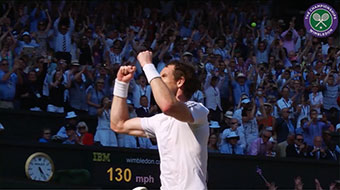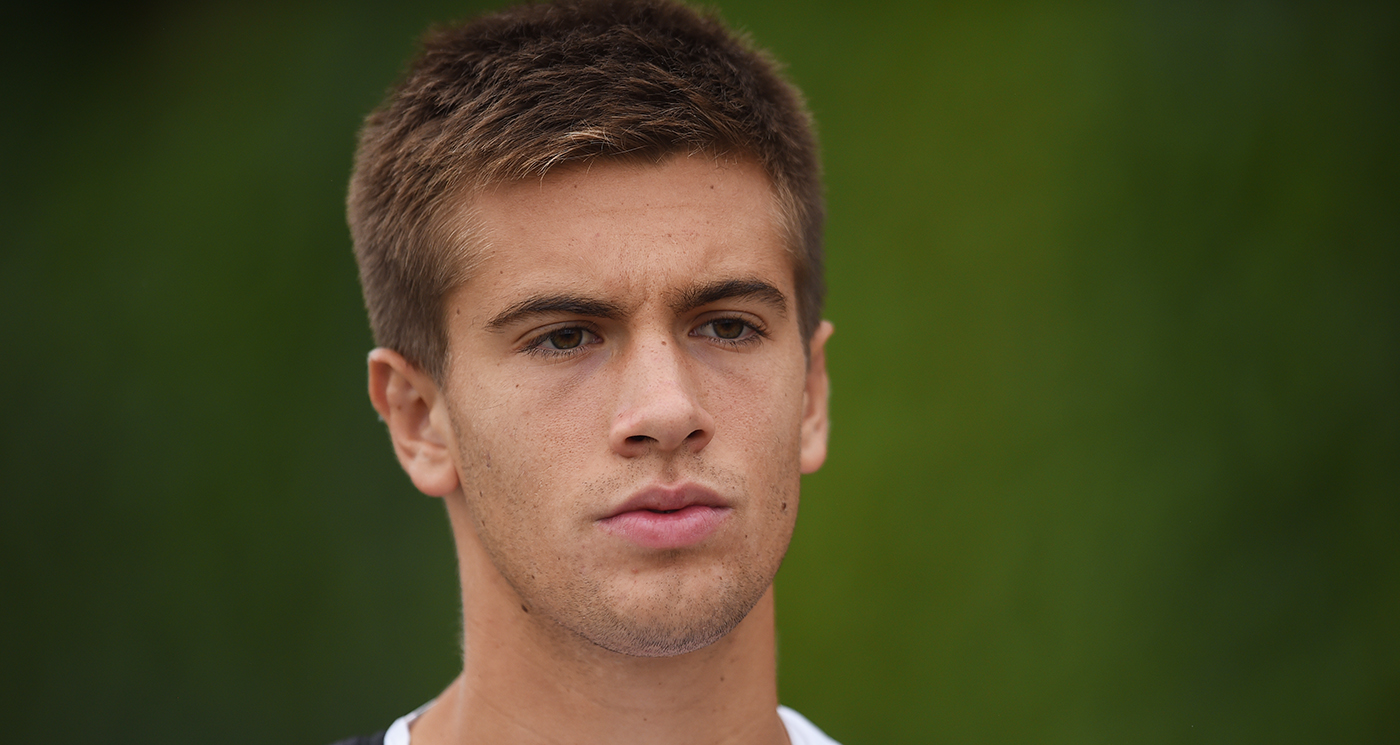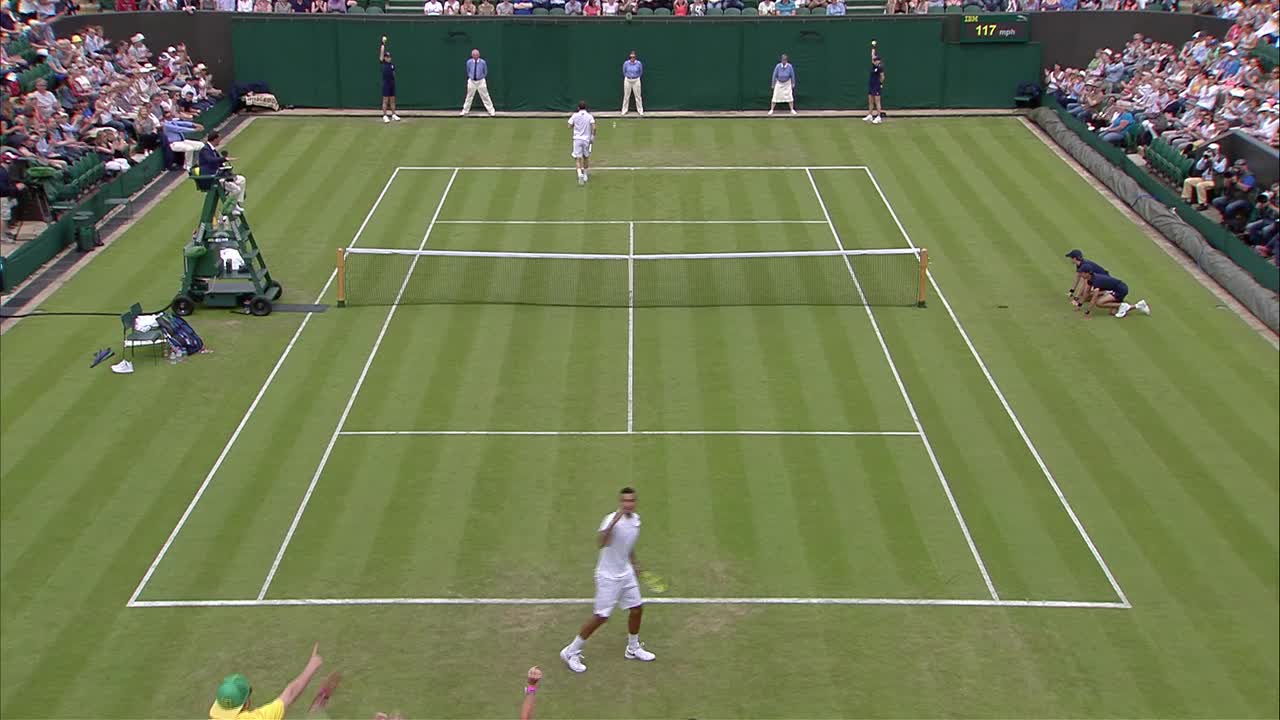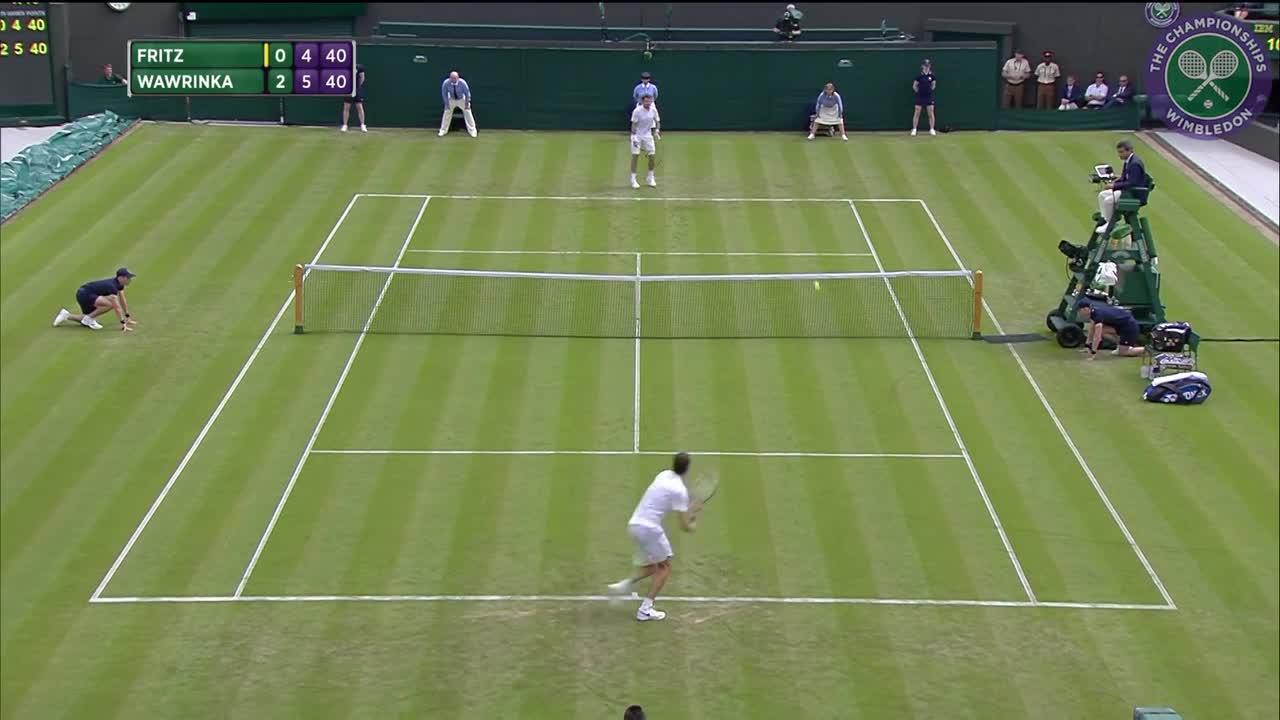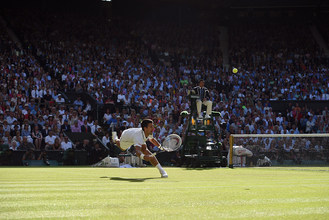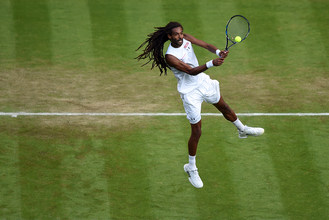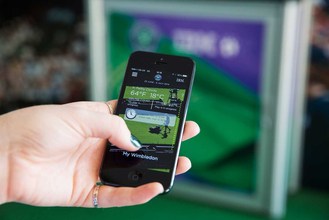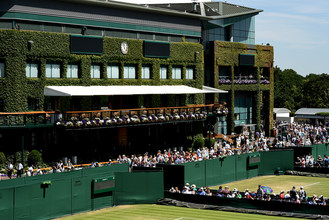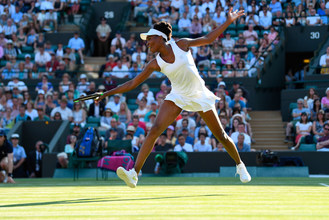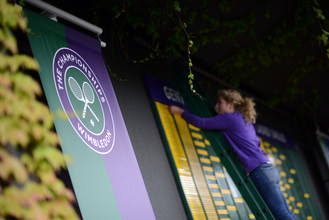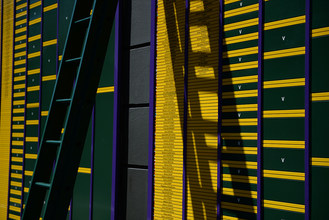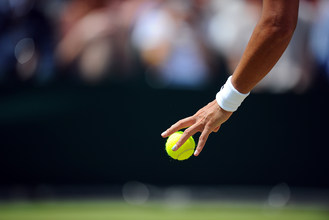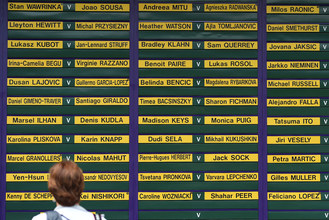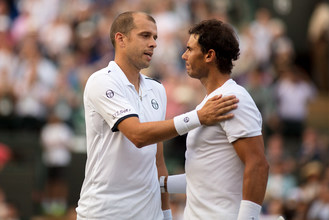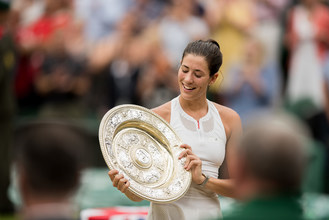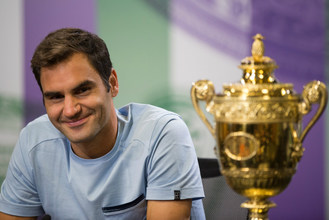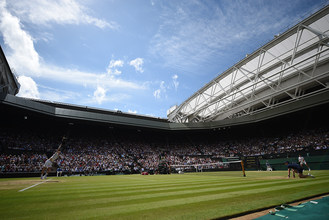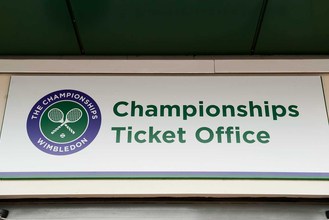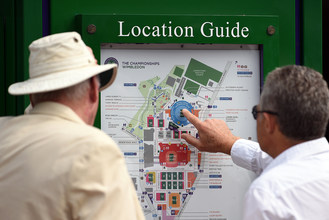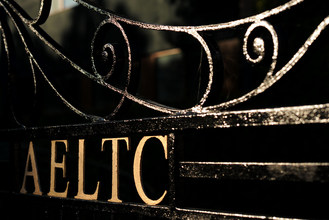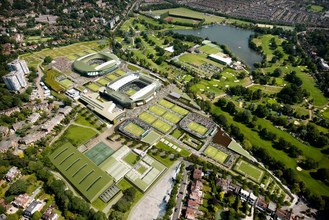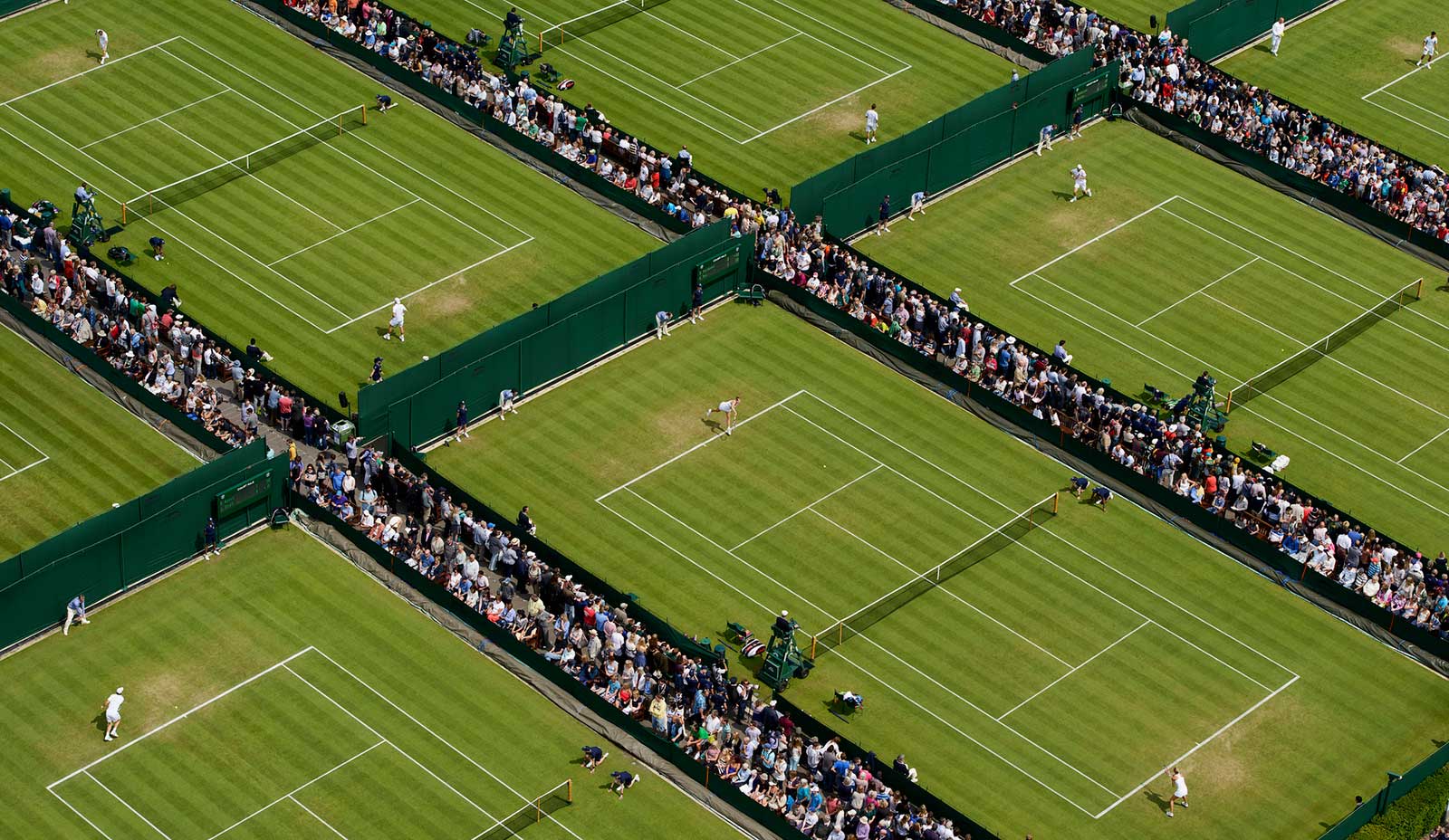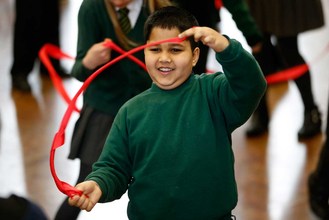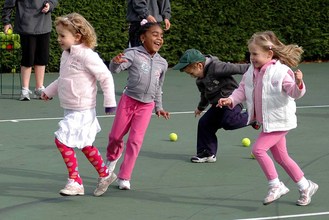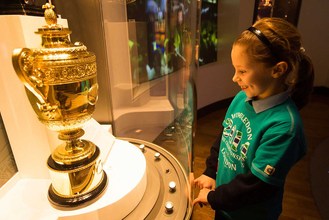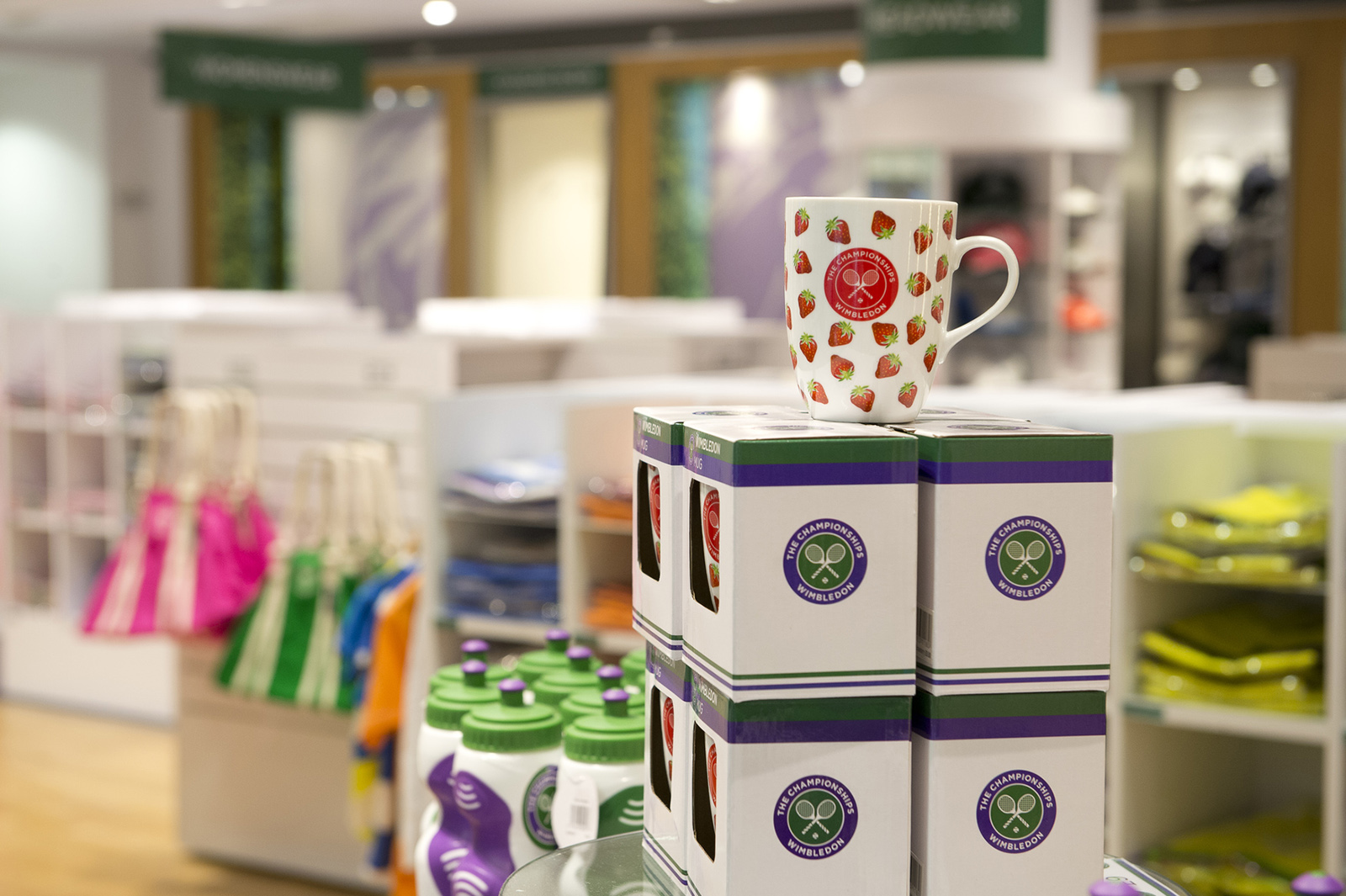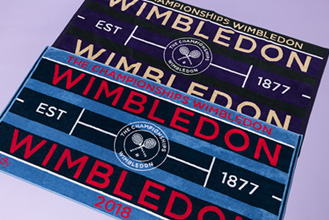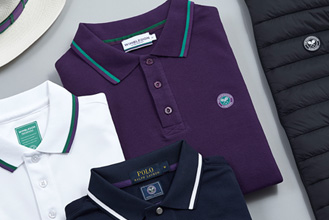NextGen is the hashtag that the ATP uses to promote its, yes, Next Generation of star players. Does the phrase lack a certain...pizzazz?
The last time I remember the men’s tour branding a group of youngsters, it was the turn of the century and Marat Safin, Tommy Haas, Juan Carlos Ferrero, and Lleyton Hewitt were on the rise. Collectively, the tour labeled them, “New Balls, Please.”
You had to give the ATP’s marketers points for chutzpah, but maybe it’s a good thing they played it safe this time.
Today’s NextGenners consist, roughly, of players 18 to 21 who have shown top-level potential. Nick Kyrgios, Alexander Zverev, Taylor Fritz, Borna Coric, Kyle Edmund, Hyeon Chung, Quentin Halys, and Elias Ymer are among its members at the moment.
As showcased on the ATP’s website, many of them have been on an excellent, Instagrammable adventure this season. They’ve strolled through European cities, they’ve met Mike Tyson, they’ve put on collared shirts and petted puppies for Paris Match.
The 18-year-old Fritz got so into it that he went ahead and proposed to his girlfriend under the Eiffel Tower.
You can understand the desire to put a fresh face or two on the tour. The men’s game has aged significantly over the last decade, and there have been no obvious heirs to the thrones of Novak Djokovic, Rafael Nadal, Andy Murray, and Roger Federer.
The only new name to appear near the top of the rankings in recent years has been Stan Wawrinka’s, and he won his first major title at age 29. More important, there’s real talent among the younger set.
This week, the cream of the NextGen crop arrived at the premier stop on its journey, the All England Club. The first thing they learned, if they didn’t know it already, is that there’s a reason it’s so hard for young players to break through: Namely, the older players, even the ones who aren’t famous, are still good.
On opening day, Edmund lost in straight sets to 55th-ranked Adrian Mannarino. The native of Beverly, England, has now lost all 12 sets he’s played at Wimbledon. At the same time, Coric was busy losing, also in straight sets, to 37-year-old Ivo Karlovic. The 19-year-old Croat, who is down 17 spots in the rankings from his career-high No.33 last autumn, appears to have hit a plateau.
He’s still very young, so he has plenty of time
On Tuesday, another wave of young guns was out on the courts early. Kyrgios, Zverev, and Fritz are the best-known, and perhaps the best, of the under-22 generation, and all three were up against a member of the over-30 generation. While only two of their matches finished before rain stopped play, each proved himself worthy of the hype.
Kyrgios was the first one on, against 37-year-old Radek Stepanek. This was a battle between youthful power and veteran guile, and I expected Stepanek’s all-court craft and geeky gyrations to get under Kyrgios’s skin.
They did, for a brief period, at the end of the third set, after the Aussie failed to convert two match points in a tie-break and was issued a warning for unsportsmanlike language.
Otherwise, though, Kyrgios handled Stepanek with ease, and settled down quickly enough after his outburst to win the fourth set 6-1. Kyrgios still goes through funks, chats to his player box, and throws in the odd disinterested game, but it seems to be part of how he manages stress—with him, everything is externalised.
The question is: Will Kyrgios meet a player who can take advantage of any lapses? We may have to wait until the fourth round, when he’s scheduled to face Murray, to get the answer. Murray has lost one set in their four meetings.
Next up, on No.1 Court, was Fritz against Wawrinka. Fritz’s European tour has been, all things considered, a rousing success; not only did he get engaged, he came fairly close to recording a win over Federer in Stuttgart.
But like Coric, Fritz seems to have hit a plateau. From last autumn to this spring, he rocketed up 600 spots in the rankings, and is currently at No.65. Since April, though, he’s seven wins to 10 losses.
For an American on clay and grass, that kind of comedown was expected, but it also shows that, unlike the player he is most often compared to, his fellow Californian Pete Sampras, Fritz probably doesn’t own a one-way ticket to the top of the sport.
And you could see that in his four-set defeat by Wawrinka on Tuesday. For the most part, it was a flat match, with each player feeling his way on the still-lush grass. While Fritz pushed the No.4 seed to two tie-breaks, showed off a stylish serve and versatile game, and refused to go away in the final set, he never quite took the rallies to his opponent or grabbed any momentum.
“He has a lot of shots,” Wawrinka said of Fritz. “He’s still very young, so he has plenty of time.” The implication was that the American might want to narrow his focus and develop a couple of go-to weapons.
If Fritz is looking for a model for how to do that, and how to take the next step up the ATP ladder, he would have been smart to watch Zverev take on Paul-Henri Mathieu on Tuesday. The 19-year-old German, who led two sets to love when the rain came, spent much of 2015 roughly where Fritz is now.
We could see his potential, and we could see that he had “a lot of shots,” as Wawrinka said of Fritz, but Zverev wasn’t able to impose his game at the top level. This year, Zverev, now ranked No.28, has upped his service speed and begun controlling points with his forehand. He’s the guy with the weapons.
At 6ft 6ins, Zverev could be the tallest power-baseliner to reach the top 10; that’s not bad news for Fritz, who is just an inch shorter.
The NextGen road is long, and you can’t have any weaknesses, at least from the baseline, if you want to travel far on it. But maybe the final step is realising that, when it comes to strengths, less can be more.
Follow the latest news and scores from Wimbledon 2016 on Wimbledon.com or Apple TV, or download the official IOS or Android apps for smartphone and tablet.

